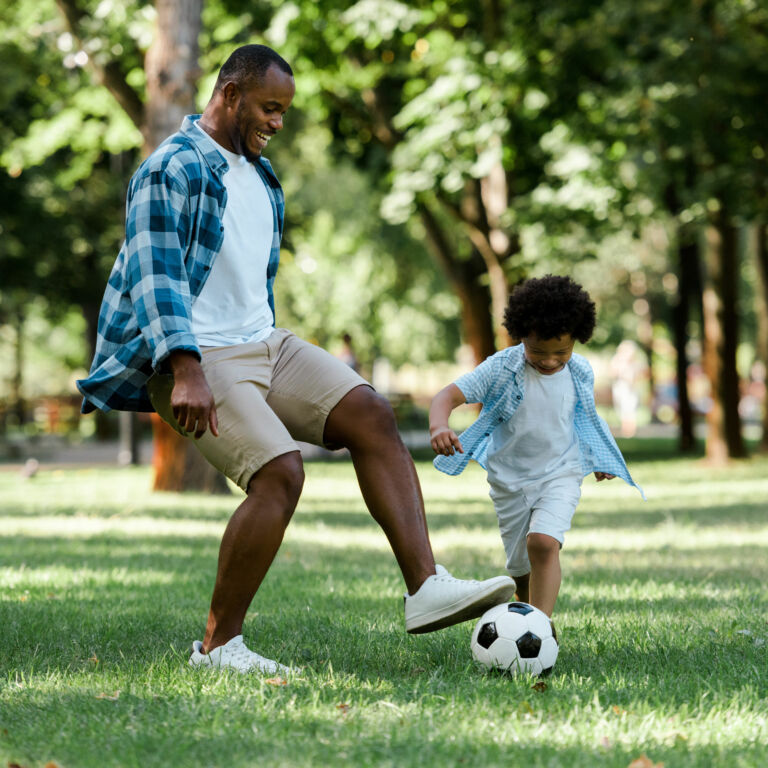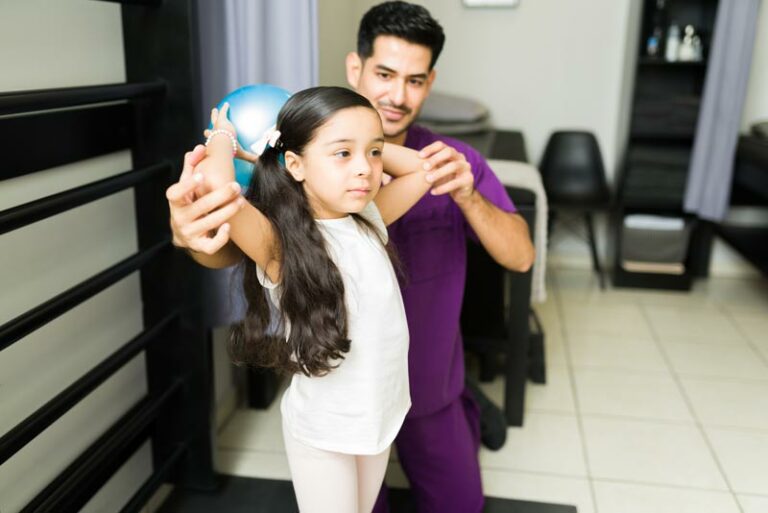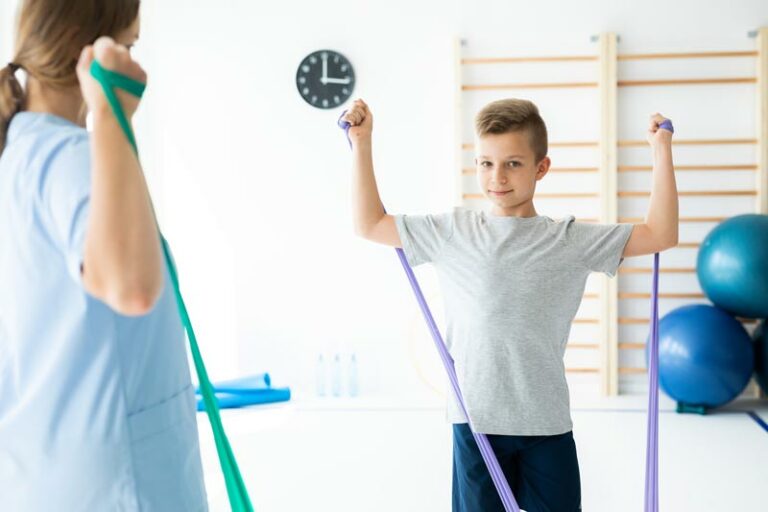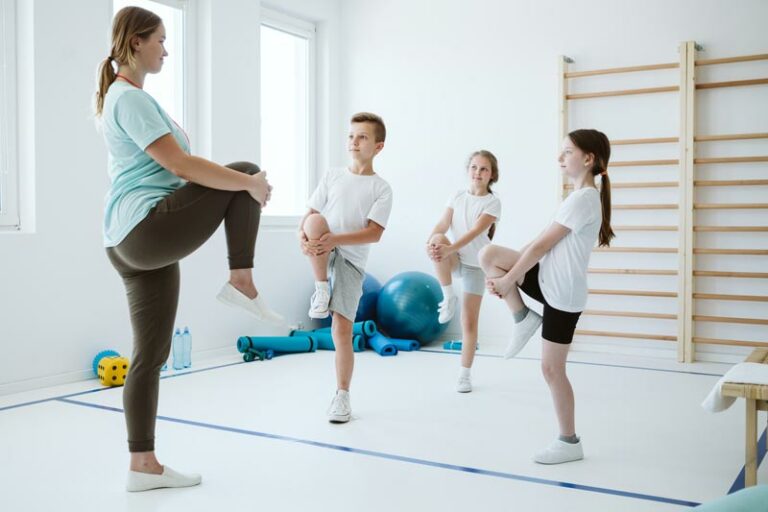What is coordination?
According to Merriam-Webster, coordination is “the harmonious functioning of parts for effective results.”1 Oxford Languages states it is “the ability to use different parts of the body together smoothly and efficiently.”2 From my perspective as a pediatric physical therapist, it is the ease of movement when doing or learning new skills.
The 4 parts of physical coordination
- Tone: the amount of work your muscles must do to make a movement
- Balance: how you can remain upright, maintain the center of gravity within the base of support
- Strength: the force your muscles make
- Motor planning: how you plan and sequence skills/ activities
Diagnoses for decreased coordination
One common diagnosis that may come to mind when thinking about decreased coordination is Cerebral Palsy: “a group of disorders that affect a person’s ability to move and maintain balance and posture.”3
Children may also have coordination difficulties — where a child “appears clumsy or awkward and has difficulties learning to coordinate movement.”4
A lesser-known diagnosis related to lack of coordination is Developmental Coordination Disorder (DCD), also known as Dyspraxia. This is a developmental disorder that becomes evident around five years of age. 5
Symptoms of DCD in children
Developmental Coordination Disorder presents as a combination of 4 criteria.5
- Motor coordination below what would be expected when considering the child’s chronological age and exposure to motor activities
- Movement qualities including clumsiness, slowness, or inaccuracy which affect daily living skills, school productivity, leisure, and play
- Symptoms begin in the early years of life
- Symptoms that cannot be explained by other conditions such as an intellectual disability or other neurological conditions with motor impairments
Why does coordination matter?
Coordination is necessary for activities that use both sides of your body. These types of activities allow for both sides of your brain to fire, which can help with increasing focus and creating new pathways in your brain for learning. Coordination is needed for the safe navigation of our environments and can help decrease the risk of falls. The better the coordination, the easier daily tasks are to perform
When a child, or an adult for that matter, struggles with something or finds it too challenging, they are less likely to want to participate. Confidence, commitment and willingness to move can be impacted by one’s coordination, which in turn can affect their health.

7 simple ways to improve coordination in children
Although CDC is a lifelong condition, there are ways you can support and help your child. 4,5
- Encourage working on specific tasks (for example, if working on jumping, practice jumping down, jumping forward, and then jumping up)
- Imagine/ picture movements before trying them
- Go for walks, runs, or do other activities that work the heart and lungs
- Work on core strength
- Come up with a goal, plan out how to do the goal, do the goal, check the goal (review) -from (Co-op)
- Break skills apart
- Encourage participation in small team or individual sports: swimming, hiking, golfing, climbing, running
How can physical therapy help with coordination?
Physical therapists can assess motor skills, create task-specific goals, and create a plan of care that includes interventions focused on specific tasks, caregiver education and home exercise programs to help children learn new skills.6
As a PT, I break down skills and provide individual strategies for each child and family I see to help them succeed. This can include working on sequencing of movement patterns or focusing on good quality of movement and body mechanics to help improve efficiency and ease of movement for age-appropriate activities or injury prevention. I can also help connect people with community resources and opportunities to encourage the continuation of movement after physical therapy. For more information on movement for everyone, check out: Movement Matters … For Everyone!
As movement experts, it is part of our job to help teach people how to move efficiently and become confident with movement in their bodies. Furthermore, it is our responsibility to encourage continued participation in preferred activities after our episode of physical therapy ends.


A few tips for families with children facing DCD5
- observe your child’s movements
- collaborate with healthcare team
- be encouraging and patient
- allow for lots of practice
For more details, please refer to: Developmental Coordination Disorder (DCD): What Caregivers need to know.
Resources
- Coordination Definition. Merriam-Webster.com. Published October 28, 2023. Accessed November 1, 2023. https://www.merriam-webster.com/dictionary/coordination.
- Coordination Definition. Google.com. Accessed November, 1, 2023.
- What is CP?. Cdc.gov. October 6, 2023. Accessed November 1, 2023. https://www.cdc.gov/ncbddd/cp/facts.html.
- Dannemiller L, Mueller M, Leitner A, Everson E, Kaplan S. Physical Therapy Management of Children with Developmental Coordination Disorder: An Evidence-Based Clinica Practice Guideline from the Academy of Pediatric Physical Therapy of the American Physical Therapy Association: Supplemental Digital Content. APTA Academy of Pediatric Physical Therapy; 2020. Accessed November 1, 2023. https://cdnlinks.lww.com/permalink/ppt/a/ppt_2020_09_17_dannemiller_ped-pt-d-20-00040_sdc001.pdf.
- Bensley K, Cyr B. Developmental Coordination Disorder: What Caregiver Need to Know. APTA Academy of Pediatric Physical Therapy; 2020. Accessed November 1, 2023. https://pediatricapta.org/clinicalpracticeguidelines/pdfs/DCDCPG%20Parent_%20Caregiver%20Supplement.pdf.
- Developmental Coordination Disorder. APTA Academy of Pediatric Physical Therapy. Published 2020. Accessed November 1, 2023. https://pediatricapta.org/clinical-practice-guidelines/Developmental%20Coordination%20Disorder.cfm.


